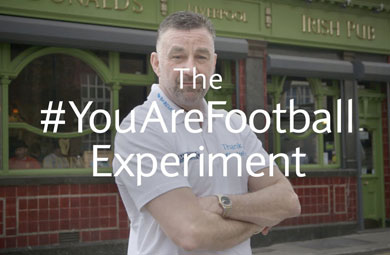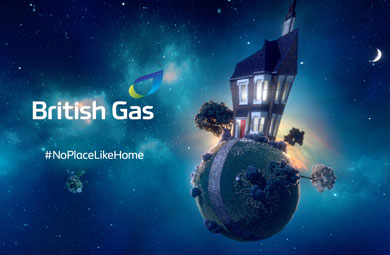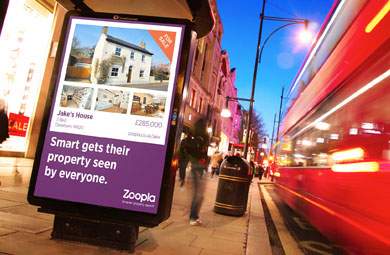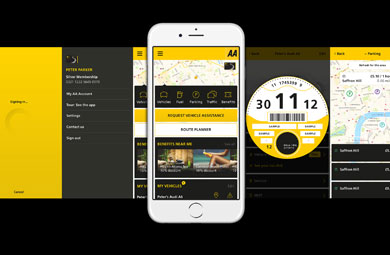
Gen Z and Gen Alpha want brands that understand their passions
Understanding where young audiences spend their time is helpful but understanding passions forms deeper brand audience relationships.
Adopted a customer-centric approach to marketing


At one time marketing was more heavily focused on aspiration; the perfect meal-time, the biggest RAM, the fittest athlete. But this is meaningless to the average person who eats dinner in front of the TV, uses their computer to watch Netflix and only wears trainers to walk the dog.
Brands must now talk about their products in a more relevant and meaningful way. Apple introduced the iPod as ‘10,000 songs in your pocket’ and Nike told us that if you have a body, you are an athlete. Using language their customers can relate to has helped these iconic brands develop strong long-term connections.
Popular TV suggests we’re obsessed with watching real-life, if Gogglebox is anything to go by. We identify parts of ourselves in others and are reassured the rest of the world is just as flawed. Brands can find emotional connections in imperfect places. Look how Sport England jiggled its way into the conversation, putting the real customer at the heart, not the aspirational one. We don’t want brands to persuade us with advertising, rather evolve products and services to meet our needs.
This often requires big brand thinking and real customer insight. C-level strategic shifts, not just marketing solutions. Uber have created a successful customer-centric experience by continuing to improve their UX, alongside customer-focused initiatives, like making travel safer through a partnership with SafetiPin, or enabling customers to listen to their personal Spotify.
There’s a large amount of data to learn from now. By understanding the customer brands can evolve to play a more supportive and empathetic role in our lives, meaning their advertising and communications develop to become more relevant and real.
Read on for examples…
Following the financial crisis Barclays needed to re-think their approach to marketing as a way of helping regain trust.
The only genuine way to do this was by spending time with their customers and activating individual initiatives around their needs.
Your Bank represents a public commitment from the bank to act on ideas submitted online, big and small, that will make their customers’ lives easier. A series of films featuring real stories from the initiatives were made for social media. They showed how everyday banking has been made better as a result of feedback and demonstrate Barclays’ commitment to listening to and understanding its customers.
One of those initiatives, Digital Eagles, gives practical and helpful advice for online issues, particularly to the older generation.
This can take place either in the home or during Tea and Teach sessions. Another is Code Playground, part of Skills for Life, where young children are taught to have fun with coding.
Their sponsorship of the Premier League also took a new approach, taking the limelight off players and instead focusing on the fans. #YouAreFootball is a series of films, interviews and stories of dedication that established Barclays as the brand which recognised and thanked the ordinary fan.
Agency: BBH & Dare, London & Red Bee, London



British Gas wanted to show they understood people’s homes really are their worlds. ‘Looking after your world’ is the unifying brand idea developed to put the customer at the heart of all communications. At the centre of this integrated brand campaign is Planet Home, a creative symbol that clearly illustrates the sentiment. Initiatives such as Pools4Schools, Free Swims and Generation Green also help to reinforce the brand’s place within the community.
Agency: CHI & Partners

Zoopla’s success comes from putting the customer at the heart of their product. A pioneer in online search, the company is built on customer data insight. It was important for the advertising to hero the customer too.
Zoopla-Size-Me is a mission to make a few lucky listings famous, and in turn showing the unique scale Zoopla can bring to property. Jake’s three bed house in Dereham was the first to be plastered all over the UK, from billboards to Twitter. A specially designed section on the site encourages users to submit their own property.
Agency: Mr. President, London

Following a redesign of their website to be more customer focused The AA wanted to consolidate their 60+ app estate into one single experience. After analysing the data they identified the features and utilities that customers found most useful and created one perfect driving companion.
The AA saw a 100% increase in users reporting breakdowns through the app and doubled registrations. One particular area of success was the fuel price data, which saw visits increase by 113%.
Agency: Rufus Leonard, London

Looks like you need to create a Creativebrief account to perform this action.
Create account Sign inLooks like you need to create a Creativebrief account to perform this action.
Create account Sign in